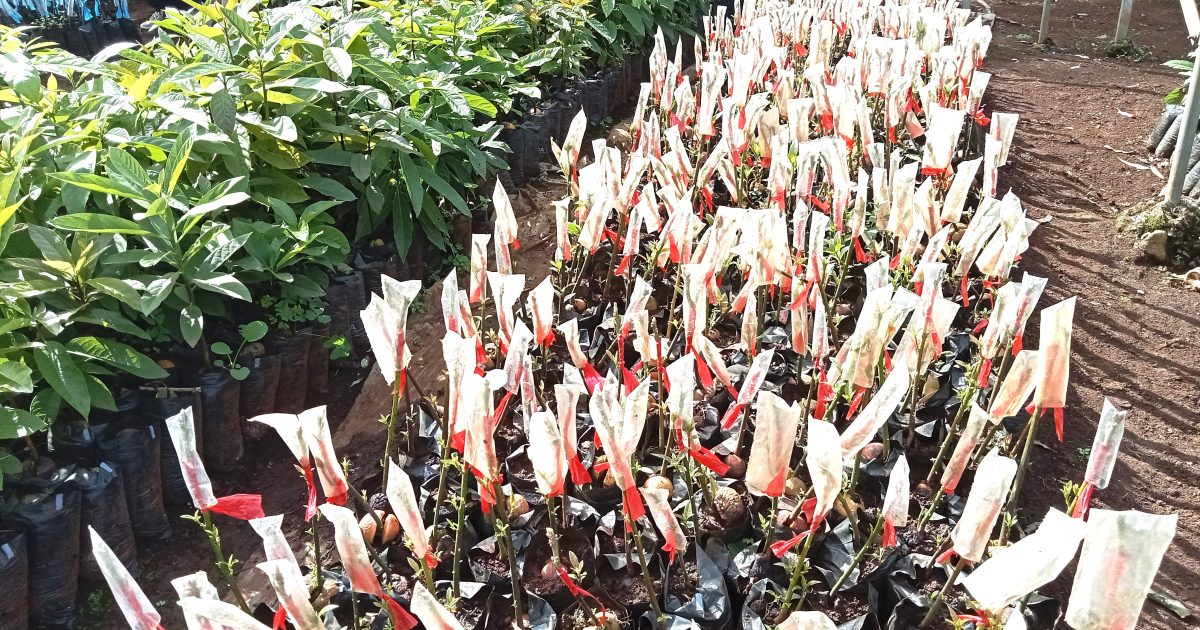In a move aimed at restoring the degraded environment in North Rift that has been blamed for perennial disastrous landslides and worsening climate change effects, the Kerio Valley Development Authority (KVDA) has upped its conservation efforts across the region’s six counties.
The Authority is projecting to plant over 6 million trees across its areas of operation of Turkana, West Pokot, Elgeyo Marakwet, Uasin Gishu, Baringo, and Samburu counties by June 2024.
In a three-pronged approach, KVDA has already planted over 1.5 million trees and fruit seedlings in the past four months alone in fulfillment of President William Ruto’s directive that the country’s national tree cover should be at least 15 billion trees by the year 2032.
During the national Tree Growing Day, KVDA donated 300,000 tree seedlings for planting in Elgeyo Marakwet County and planted 10,000 tree seedlings along the Yokot dam catchment as part of its contribution during the day that Health Cabinet Secretary Susan Nakhumicha Wafula led in the county.
In a one-on-one interview with KNA in his Eldoret office, KVDA managing director Sammy Naporos said apart from focusing on mitigating the effects of climate change through tree growing, KVDA also focuses on providing fruit seedlings to households to enable them to earn income through the sale of fruits and bolster food security and nutrition at the family level.
“It is for this reason the agency is partnering with public institutions, organsed youth and women groups as well as individual farmers with the intended target of growing 6m trees in the six Counties in the North Rift region.
Special attention is being given to the rehabilitation of the Cherangan’y water tower with the help of partners including the Italian government, conservation of the Kerio river basin is also critical to check on perennial landslides because the land has been left bare due to human activities,” added Naporos.
According to the MD, the plan will also see the rehabilitation of the Turkwel dam catchment area to check on the siltation of the water reservoir and rehabilitate the region’s escarpment which is always prone to deadly landslides.
“We have over 6 million trees and fruit seedlings spread across our various nurseries and this is what we are supplying to the earmarked schools and farmers. Initially, our strategy was to rehabilitate the government-gazetted forests, but we have realised livestock grazing destroys the seedlings thus reversing the gains made,” he explained.
He added, “In West Pokot, we have already planted 260, 000 trees as well as 4, 000 avocado seedlings which were distributed to 50 learning institutions and local farmers. In Uasin Gishu we planted 200, 000 trees in 100 schools across Kesses, Soy, and Kapseret constituencies,”
The same has been replicated in Turkana, Elgeyo Marakwet, Baringo, and Samburu counties where the latter will benefit from a 1 million tree nursery established in Maralal town.
Naporos said that they want to economically empower locals through the provision of mango and avocado seedlings and ensure they do not entirely depend on traditional cereals and livestock as a source of income, or resort to charcoal burning that has had a negative impact on the environment.
“In our approach, we are focused on conserving the environment which has unfortunately been highly degraded because of unchecked exploitation for charcoal, and timber among other products now resulting in climate change. The fruit seedlings besides conserving the environment have economic value to the community,” he noted.
The MD said there is a strong link between food security and environmental destruction as the demand for more land for farming increases
“The programme is an advocacy to boost forest cover being implemented as a permanent solution to disasters in the degraded mountainous areas to prevent future landslides and play a major role in risk reduction,” said.
The MD further explained that as much as they are focusing on institutions and individual farmers to implement the tree and fruit growing initiative, KVDA will still actively support and participate in the conservation of the Cherangan’y and Kaptagat water towers.
The Cherangan’y water tower covers over 365,245 hectares (120,841 ha of gazetted forest and another 244,404 ha under buffer zone), sprawling across West Pokot, Trans Nzoia, and Elgeyo Marakwet counties.
It is a critical watershed area for the Lake Victoria and Turkana basins and is the source for the Nzoia, Turkwel, and Kerio rivers, among others.
“Most of the rivers draining to Kerio-valley River emanate from Cherangan’y and Kaptagat ecosystems and having adequate water in the rivers means support to livelihoods. Over the years the volumes of the water have been receding due to environmental destruction,” he said.
The perennial Kerio Valley insecurity is resource-based and lack of adequate water aggravates the conflict but with more water the communities would be encouraged to do irrigation farming thus an improved socio-economic status in the region, observed Naporos
A farmer, David Kipsaina who benefited from avocado seedlings from KVDA said the fruits would boost his income since he has been relying on cabbage farming for sustenance.
“These avocado seedlings are of great benefit to us and will expand our income base and in the long run aid in environmental conservation. This is a good investment that I will encourage my children to plant more,” he said.
KVDA Board chairman Mark Chesergon said their main mandate was environmental conservation, along the Cherangan’y water catchment basin and that explains why there is a deliberate attempt to conserve it.
“The seedlings require attention to enable them to reach maturity without going to waste. In this way, we are going to achieve the presidential directive of 10 percent forest cover by the end of this year through unity as a country,”
“This is an ambitious plan, which we are committed to undertake at whatever cost if we are to avoid further calamities from landslides. We must put measures in place to avert the calamities in the area,” he added.
Chesergon said most communities along the Kerio Valley hanging hills, and other hilly areas had suffered landslides, displacements, and loss of lives due to poor land management.
By Kiptanui Cherono



